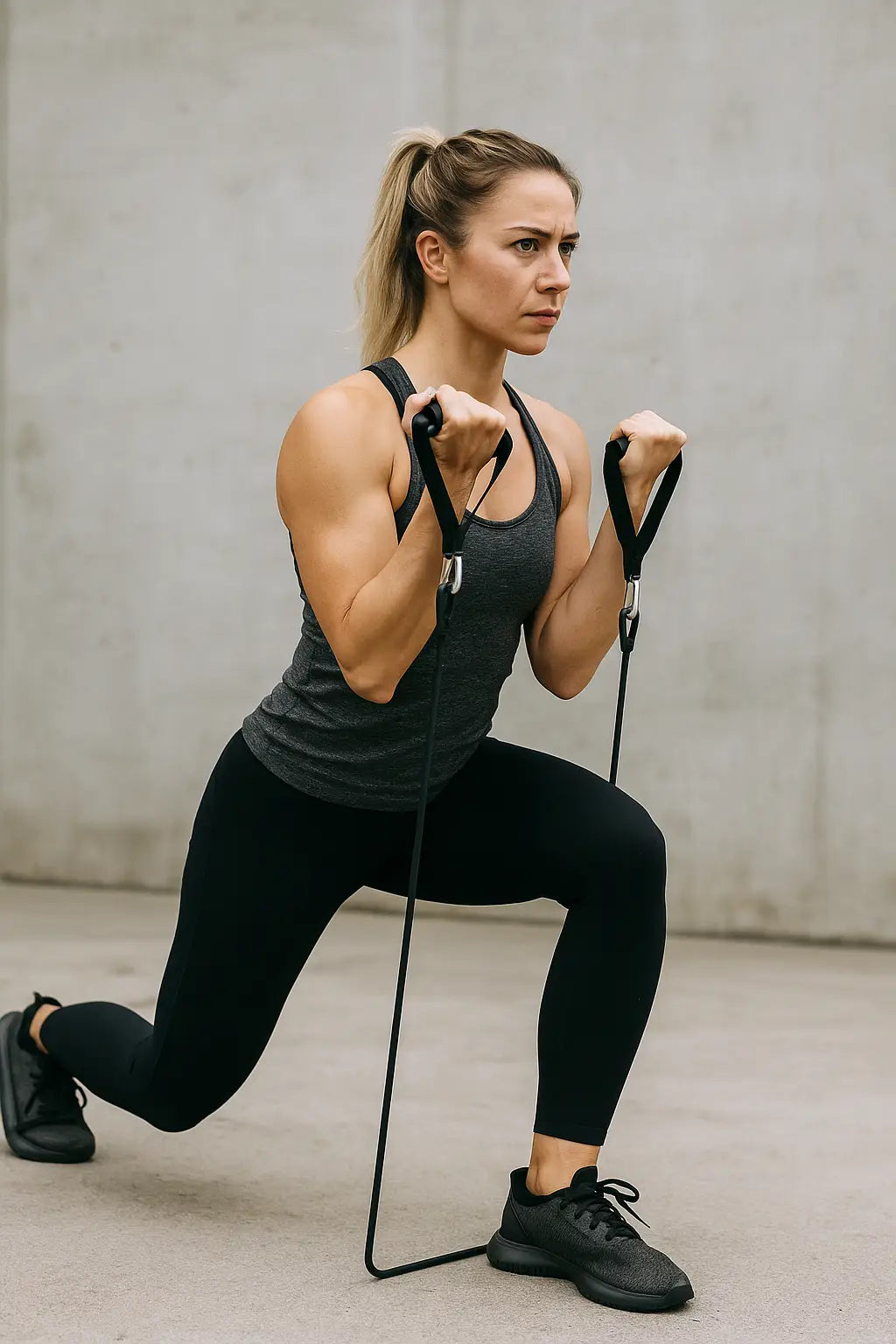
Can Strength Training for Runners Prevent Injuries and Boost Speed?
Share
Struggling with Injuries? Why Strength Training for Runners Is the Missing Piece
Running is one of the most natural forms of exercise. Lace up your shoes, hit the road, and you’re instantly working on endurance, stamina, and mental clarity. But here’s the truth: mileage alone won’t carry you to the next level. Many runners unknowingly set themselves up for injuries and performance plateaus because they neglect one vital piece of the training puzzle—strength training for runners.
Whether you’re chasing faster race times, hoping to run without nagging injuries, or just looking to stay strong on the trails, the right strength program can transform your performance. And you don’t need heavy barbells or hours in the gym. In fact, one of the most underrated tools—resistance bands—can help you build power, stability, and endurance right from home.
Why Runners Can’t Rely on Mileage Alone
It’s tempting to think that logging more miles automatically makes you a stronger runner. After all, practice makes perfect, right? The problem is that repetition without reinforcement leads to breakdowns.
Common running injuries like shin splints, IT band syndrome, runner’s knee, and plantar fasciitis often come from muscular imbalances or weak stabilizing muscles. When your glutes, hips, and core aren’t pulling their weight, your joints take the beating. Instead of faster times, you’re sidelined with ice packs and foam rollers.
Mileage builds endurance, but without strength training, you’re building endurance on an unstable foundation. And a shaky foundation eventually cracks.
That’s why strength training for runners isn’t optional—it’s essential. It helps correct muscular imbalances, stabilizes your stride, and builds durability so your body can handle the miles.
The Science Behind Strength Training for Runners
Sports science consistently backs the benefits of strength training for runners:
- Injury prevention: Stronger muscles absorb more force, taking stress off your joints.
- Improved running economy: With better posture and muscle balance, you use less energy with every stride.
- More speed and power: Strong glutes and hamstrings mean stronger push-offs, quicker acceleration, and smoother hill climbs.
- Longevity: Runners who strength train are less likely to burn out or suffer long-term damage.
One meta-analysis published in the British Journal of Sports Medicine found that runners who incorporated resistance training into their routines improved time-trial performance by 2–8% and significantly reduced injury rates.
In other words, if you want to boost your running speed and keep injuries at bay, adding strength work to your plan is one of the smartest investments you can make.
Why Resistance Bands Are Perfect for Runners
When most people think “strength training,” they imagine clunky weights and hours in the gym. But runners don’t need bodybuilding-style programs—they need functional, running-specific strength.
This is where resistance bands shine.
- Portable & lightweight: You can toss them in your backpack, car, or suitcase. Perfect for pre-run warmups or travel.
- Joint-friendly: Unlike heavy weights, bands provide smooth, consistent tension, reducing injury risk.
- Versatile: With one band, you can target glutes, hips, hamstrings, quads, and core.
- Progressive: Adjustable bands allow you to scale up resistance as you get stronger.
A great place to start is with FortiraFit Adjustable Tension Resistance Bands, designed specifically for athletes who need durability, portability, and the right level of resistance for functional training.

5 Essential Resistance Band Exercises Every Runner Should Try
Strength training for runners doesn’t have to be complicated. These five exercises hit the exact muscles that drive better running mechanics and injury prevention.
1. Lateral Band Walks
- Target: Glutes, hips
- Benefit: Prevents knees from caving in during running, reducing knee pain.
2. Glute Bridges with Bands
- Target: Glutes, hamstrings, core
- Benefit: Builds hip drive for more powerful strides.
3. Monster Walks
- Target: Glutes, hip abductors, IT band
- Benefit: Improves lateral stability and prevents IT band syndrome.
4. Standing Hip Abductions
- Target: Glute medius, hip stabilizers
- Benefit: Corrects “hip drop” that leads to lower back and knee pain.
5. Band-Assisted Lunges
- Target: Quads, glutes, hamstrings, core
- Benefit: Builds unilateral strength and balance for more efficient strides.
All of these can be done at home, at the track, or even in your living room with FortiraFit Adjustable Tension Resistance Bands.
How Strength Training Translates to Faster Running
The connection between strength training and speed is undeniable:
- Core stability = better posture. Every degree you slump forward wastes energy. A strong core keeps you upright, efficient, and breathing easier.
- Glute power = stronger push-offs. Your glutes are your engine. Strengthening them with resistance bands creates explosive strides.
- Hamstring endurance = smoother turnover. Strong hamstrings help you maintain cadence over long distances.
- Stability = fewer energy leaks. When stabilizers like hips and ankles are strong, you spend less energy correcting poor form.
That’s how strength training for runners not only prevents injuries but also boosts running speed.
Sample 20-Minute Runner’s Strength Workout with Bands
Short on time? Here’s a quick routine you can add to your weekly training schedule:
Warm-Up (5 minutes)
- Leg swings, dynamic stretches, light jogging.
Circuit (Repeat 2–3x)
- 15 Lateral Band Walks (each side)
- 12 Glute Bridges with Bands
- 10 Monster Walks (each side)
- 12 Standing Hip Abductions (each side)
- 10 Band-Assisted Lunges (each leg)
- 30-second plank with band pull-apart
Cool-Down (3–5 minutes)
- Static stretches, hip openers, foam rolling.
Do this 2–3 times per week, and within weeks you’ll feel stronger and more stable on every run.
Common Mistakes Runners Make When Strength Training
While the benefits are clear, many runners stumble when adding strength training into their routines. Here are mistakes to avoid:
- Ignoring form: Poor technique can lead to the very injuries you’re trying to prevent.
- Overloading too quickly: Start light and increase resistance gradually.
- Neglecting the core and upper body: Strong arms and core improve running economy.
- Inconsistency: Doing it once a month won’t cut it—consistency builds resilience.
Conclusion – Stronger, Faster, and Injury-Free Running
So, can strength training for runners really prevent injuries and boost speed? Absolutely. By targeting the right muscles with smart, consistent workouts, you’ll build the durability to stay healthy and the power to run faster.
You don’t need a gym membership or fancy equipment. Just a few minutes, a handful of key exercises, and the right tools will set you apart from the average runner.
Take the first step toward stronger, injury-free runs with FortiraFit Adjustable Tension Resistance Bands. They’re portable, versatile, and built to help runners like you perform at their best.
